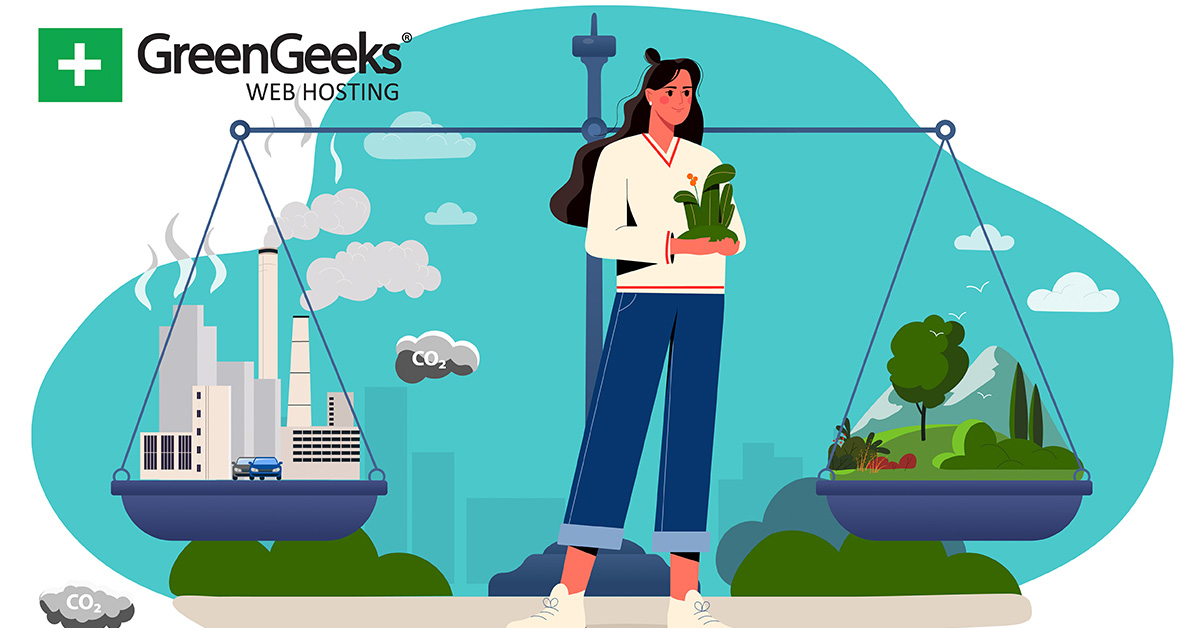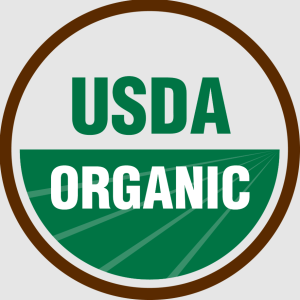
For environmentalists out there, shrinkflation and emissions go hand-in-hand, whether you like it or not.
You might have noticed that your favorite snacks seem smaller than before, yet the price remains the same. This strategy, called shrinkflation, allows businesses to protect their profit margins by reducing product sizes instead of increasing prices.
But the story goes beyond the frustration of finding fewer chips in your bag. Over time, continuous downsizing of products can spark higher production cycles, which means more energy usage and extra resources consumed. The result is a rise in greenhouse gases that intensifies climate challenges.
Instead of saving costs in the long run, shrinkflation can speed up the cycle of production and transportation, leading to heavier carbon footprints. This chain reaction affects not just our wallets but also the planet’s health.
In this article, we’ll examine how smaller product sizes can create bigger impacts on the environment. We’ll also explore the factors that drive these effects to help you understand why each subtle reduction in product size could carry an even bigger cost for our climate.
Shrinkflation: A Closer Look
Let’s first properly define shrinkflation. Shrinkflation is a pricing tactic in which manufacturers reduce the size or quantity of a product but keep its price the same. Unlike standard price inflation, where the cost of goods increases visibly, shrinkflation is subtle and often goes unnoticed at first glance.
For instance, you may have bought a cereal box that used to be 500 grams but now weighs 450 grams for the same price, reflecting this hidden form of cost adjustment.
Most people do not notice these small adjustments at first because the price tag stays the same. We often rely on habit or brand loyalty rather than paying close attention to product weight or volume.
Over the long term, though, consumers might grow frustrated upon realizing they’re getting less for their money.
At the same time, each unnoticed downsizing cycle can contribute to further resource use and associated emissions, highlighting the hidden cost behind these small product tweaks. Shrinkflation emissions enter the scene because smaller product sizes can push companies to ramp up production more frequently.
Linking Shrinkflation to Increased Emissions
According to the U.S. Environmental Protection Agency, manufacturing and transportation account for a large share of global carbon emissions. Repeated shrinkage practices on our everyday products make curbing climate change more challenging, as more resources are extracted and discarded at every step.
Higher Production Cycles
Shrinking the size of items often leads to faster product turnover and more frequent manufacturing cycles. Consumers run out of products sooner and need to buy replacements more often, prompting companies to ramp up production and restocking.
This accelerated production cycle has several emission-related consequences:
- More Frequent Manufacturing Runs: When package contents decrease, manufacturers must produce a greater number of units to deliver the same total volume of goods. This means shorter production runs and more frequent equipment changeovers, which are less efficient. Each startup of a production line consumes more electricity and fuel each cycle.
- Rapid Stock Turnover: Retailers see shelves emptying faster, requiring more frequent resupply shipments. The net effect is more manufacturing batches and deliveries, each with associated energy use and emissions from factories and trucks.
- Energy Spikes in Production: Ramping production up and down more frequently wastes energy compared to steady, optimized production. Keeping machinery on standby and running additional batches consumes electricity and often generates additional heat and emissions per unit of product. As a rule, the more production cycles needed to produce a given amount of goods, the more power is used in total.
Resource Use and Waste Generation
Shrinkflation can also drive up the use of raw materials (especially for packaging) and the amount of waste generated per unit of product consumed. Producing more units means using more packaging components, ingredients, and resources in total. It also means consumers dispose of packaging more frequently, adding to waste streams and associated emissions:
- Increased Raw Material Usage: Paradoxically, selling fewer products in each package can increase the total materials needed to deliver a given amount of goods. Each item still requires its own wrapper, bottle, or box, so more units = more packaging. All that additional material has an environmental cost upstream (extraction of paper, plastic, aluminum, etc.) and downstream (disposal).
- Packaging Waste Explosion: The waste generated from packaging grows with shrinkflation. Each individual unit – even if smaller – contributes its own wrapper or container to the trash. Consumers often respond to shrinkflation packages by buying multiples or larger quantities, which drives more total packaging into the waste stream.
- Lower Recycling and Higher Landfill Rates: The extra packaging from shrinkflation products is often not recycled. Small wrappers and multi-layer pouches (common in snack or single-serve items) are frequently difficult to recycle, so they end up in landfills or incinerators. End-of-life impacts are amplified—more trash means more greenhouse gas emissions and a higher risk of plastic pollution leakage into oceans.
The Bigger Picture: Hidden Costs and Consequences of Shrinkflation
While shrinkflation’s effect on emissions is significant, it’s also crucial to consider other hidden costs and broader consequences.
Long-Term Consumer Trust
Constant shrinkage of products can erode consumer confidence over time. People often feel misled when they realize they are paying the same price but receiving less. This frustration can hurt brand loyalty, especially as environmental awareness grows and buyers look for honest, responsible companies.
Firms that remain transparent about product sizes and take steps to limit waste often see stronger customer relationships. An IBM survey found that around 50% of consumers prefer brands committed to sustainability. When businesses prioritize ethical sourcing and openly communicate about their practices, they build trust and encourage repeat sales.
Policy and Regulatory Pressures
Governments worldwide are increasingly scrutinizing shrinkflation practices. In France, legislation introduced in July 2024 mandates that retailers inform consumers if a product’s size has been reduced without a corresponding price decrease.
Similarly, bills have been proposed in the United States to ban deceptive shrinkflation practices and require clear labeling of product size reductions. These evolving regulations aim to protect consumers and encourage corporate transparency. They also indirectly address environmental concerns by promoting more sustainable consumption patterns.
In the future, businesses that fail to adapt might face fines or negative publicity. By proactively addressing wasteful practices, companies can stay ahead of regulations and show genuine commitment to both their customers and the planet.
Minimizing Shrinkflation and its Increased Emissions: Practical Solutions and Strategies
Shrinkflation’s role in polluting our environment is real, but how can you mitigate its effects? Here are some practical solutions and strategies that can help solve this issue.
Consumer Awareness and Action
Everyday shoppers can play a huge role in curbing shrinkflation emissions by being more mindful of product sizes and packaging. Look for clear labels that show weight or volume, and consider buying in bulk to cut down on waste from individual wrappers or containers.
You can also help reduce waste by choosing items with minimal or biodegradable packaging. Supporting brands that use recycled materials encourages a market demand for greener solutions. With greater consumer pressure, businesses are more likely to innovate and offer sustainable alternatives.
Corporate Responsibility
Companies that adopt transparent labeling and open communication build trust and foster brand loyalty. By revealing product size changes clearly, they show respect for customer awareness and help fight the perception of sneaky marketing tactics.
Beyond transparency, switching to eco-friendly raw materials for packaging or investing in energy-efficient production lines can lower a firm’s carbon footprint.
Many corporations now share sustainability reports to showcase emission-reducing achievements. For instance, Unilever’s Climate Transition Action Plan outlines goals to reduce its greenhouse gas impact by 42% by 2030 from its 2021 base year.
This kind of accountability not only supports the environment but also aligns with evolving consumer expectations.
Government and Policy Reforms
Governments across the globe are introducing regulations on packaging standards to limit waste and combat climate change. Some regions require clearer labeling of net weight or volume to guard against misleading size reductions.
New policies, like the European Union’s Circular Economy Action Plan, focus on designing products that are durable, recyclable, and energy-efficient from the start.
Stricter rules around plastics, emissions reporting, and green production methods encourage a shift away from resource-intensive goods. Collaboration between lawmakers, businesses, and consumers can ensure balanced frameworks that boost innovation without stifling economic growth.
Innovations and Future Trends
Emerging technologies offer hope for reducing waste tied to shrinkflation. Bioplastics, compostable packaging, and energy-efficient machinery help companies cut down on emissions while still meeting consumer needs. Embracing circular economy models—where materials get reused or repurposed—can eliminate much of the waste cycle altogether.
By focusing on better design and resource management, the overall impact on the environment can be significantly reduced. Forward-thinking solutions make it possible to tackle shrinkflation emissions while supporting healthier markets and a greener planet.
FAQs About Shrinkflation and Emission
Some firms believe customers will react less negatively to smaller packages than to a direct price increase. Shrinkflation also helps them maintain steady shelf prices.
Smaller products can lead to more frequent production runs, increasing energy use. This results in higher carbon emissions over time. Also, extra packaging waste amplifies environmental damage.
Usually, yes, because it causes more manufacturing cycles, shipping, and waste. Unless a company cuts packaging proportionally or uses greener materials, there’s a net rise in emissions.
Manufacturers tend to reduce product sizes gradually. They often keep the packaging design almost identical, making subtle changes in weight or volume. Most shoppers rely on price cues, so they miss the small difference in content.
It often happens with food items like snacks, cereals, and beverages. Household goods like paper towels and toiletries are also prime targets. If the company sees an advantage, it can downsize practically any consumer product.
Pay attention to product weight, volume, and serving sizes. Compare older and newer packaging to see if the net content has changed.
Choose brands that practice transparent labeling and sustainable packaging. Buy in bulk when possible since it cuts down on excess wrappers.
Final Thoughts
Shrinkflation emission is more than a passing concern. Each time a product loses an ounce yet keeps the same price, manufacturing ramps up. This repetitive cycle uses more energy, raw materials, and transport, boosting carbon footprints worldwide.
We can break this pattern by staying alert to every label we see. Choosing brands with fair pricing and eco-friendly packaging puts pressure on others to follow. A united consumer front signals that silent downsizing is unacceptable.
Manufacturers can also act responsibly by openly sharing size changes and investing in efficient processes. Meanwhile, as governments adopt stronger rules, the race to minimize waste is gaining momentum.
Ultimately, shrinkflation emission reminds us that small marketplace shifts can carry big environmental consequences. The power lies in our everyday choices, and the future of our planet hinges on them.





